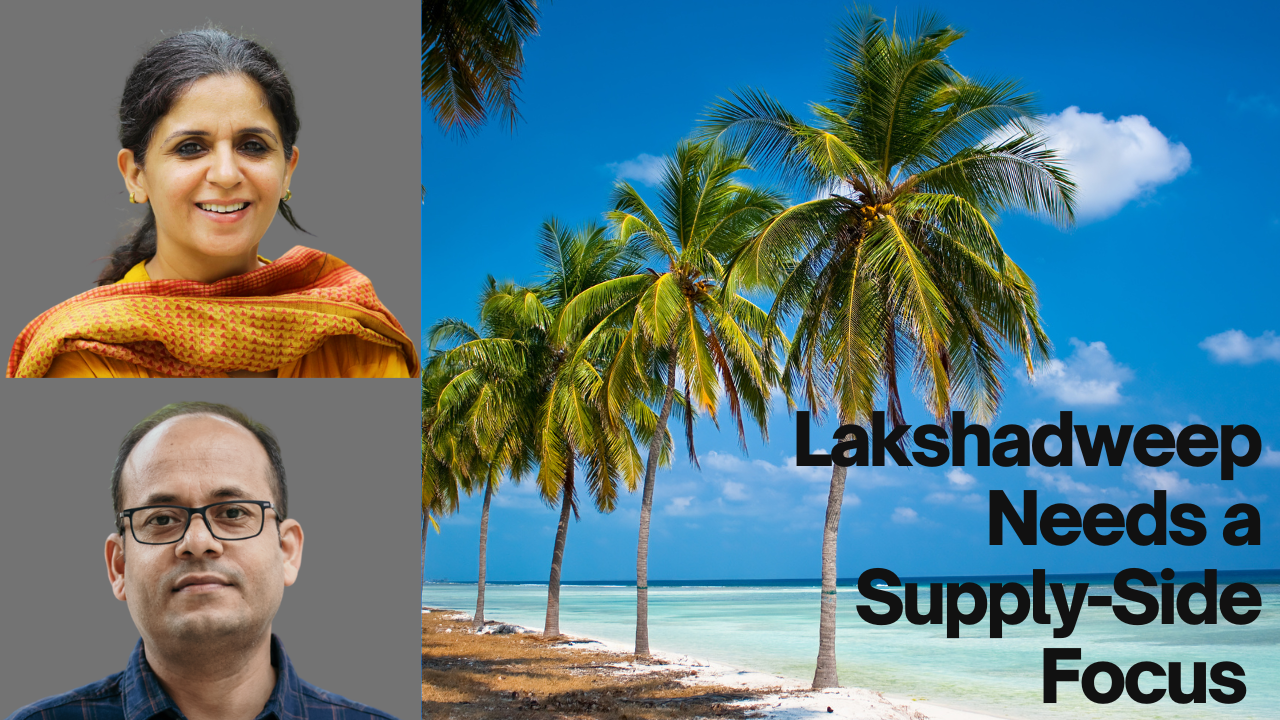Lakshadweep needs a supply-side focus
13 Jan 2024
Opinion: Poonam Munjal and Palash Baruah.
The attention the archipelago is receiving must be leveraged through strategic marketing campaigns, both by government and private stakeholders.
Lakshadweep, a uni-district and the smallest Union Territory of India, is getting attention like never before after Prime Minister Narendra Modi posted pictures of his “exhilarating experience” during his visit to the UT, early this month. In a matter of four days, there has been a jaw-dropping rise of 3400% in Lakshadweep searches on travel sites; “Lakshadweep” became the 10th most searched word on Google in India; and the worldwide search for Lakshadweep was the highest in the last 20 years.
What else do we know about Lakshadweep? Formed in 1956, Lakshadweep, meaning a hundred thousand islands, is an archipelago of 36 islands, of which only 10 are inhabited with a population of about 64,473 as per the 2011 census. Despite a very small population, the region showcases a harmonious coexistence of diverse customs and practices. Malayali Muslims form the majority, contributing to the cultural mosaic with their language, cuisine, and religious traditions.
Little can be stated about its economy. No official Gross State Domestic Product (GSDP) statements are available for the island. It might be contributing a small fraction to the country’s GDP. But what is known is that its economy revolves around fisheries, coconut cultivation, and tourism, thanks to the archipelago’s pristine coral reefs, clear blue waters, and tranquil landscapes. The local administration has been making efforts to promote sustainable tourism, striking a balance between economic development and environmental conservation.
So far, both domestic and international tourist arrivals to Lakshadweep, as per the ministry of tourism’s India Tourism Statistics, have been extremely meagre. The UT hosts just about 10,000 domestic and less than a thousand international tourists each year. Despite this, tourism is a significant contributor to the UT’s economy. According to a report by the National Council of Applied Economic Research (NCAER) on Lakshadweep’s Tourism Satellite Account, which estimated tourism economy in terms of both GDP and employment, tourism contributed 4.3% to the UT’s GDP and a sizeable 22% to its employment in 2015-16. This is much above the national average of 2.8% and 5.4% , respectively for the same year. Any escalation in the number of tourists to the UT can give a significant boost to not just its tourism economy but also to its overall economy, not to mention the strong multiplier effect of tourism.
The recent spat with Maldives has already served as a catalyst to increasing its visibility and promoting it as a sought-after tourist destination. The media coverage and publicity surrounding the PM’s trip would naturally generate widespread interest and curiosity among the general public. This heightened attention should be leveraged through strategic marketing campaigns, both by the government and private tourism stakeholders.
The need of the hour is to focus on the supply side of tourism in order to meet the growing tourism demand. The supply side refers to the tourism-supplying industries like accommodation, transportation, restaurants, recreation, culture, and more. Lakshadweep needs to be developed as a tourist destination. This very much falls in line with the government’s agenda to develop 50 new tourism destinations across the country, with a focus on green tourism.
Destination development with strategic planning must be the focus to improve or augment the supply -side of tourism when the demand side is expected to flourish. Such planning is expected to provide compelling experiences, quality infrastructure, and remarkable services to entice repeat visitation by the tourists.
Beyond the current lodging and hotel options, the Tata Group has recently declared its intention to establish two luxurious resorts by 2026 on the islands of Suheli and Kadmat in Lakshadweep. These forthcoming Taj resorts are poised to become world-class destinations, catering to both international and national tourists.
Regarding its comparison with Maldives, Lakshadweep may turn out to be a preferred destination for more reasons than have been highlighted in social media. Its geographical proximity to the Indian subcontinent, merely 500 km away from the southwestern coast, makes it easily accessible and potentially cost-effective destination. It offers a unique, less explored, and offbeat experience. With thoughtful planning, sustainable practices, and the allure of untouched beauty, Lakshadweep has the potential to emerge not only as a sought-after tourist destination but also as a beacon of responsible tourism, balancing growth with environmental conservation.
Poonam Munjal & Palash Baruah, respectively, professor and associate fellow, National Council of Applied Economic Research (NCAER). Views are personal.
Published in: The Financial Express, 13 Jan 2024






